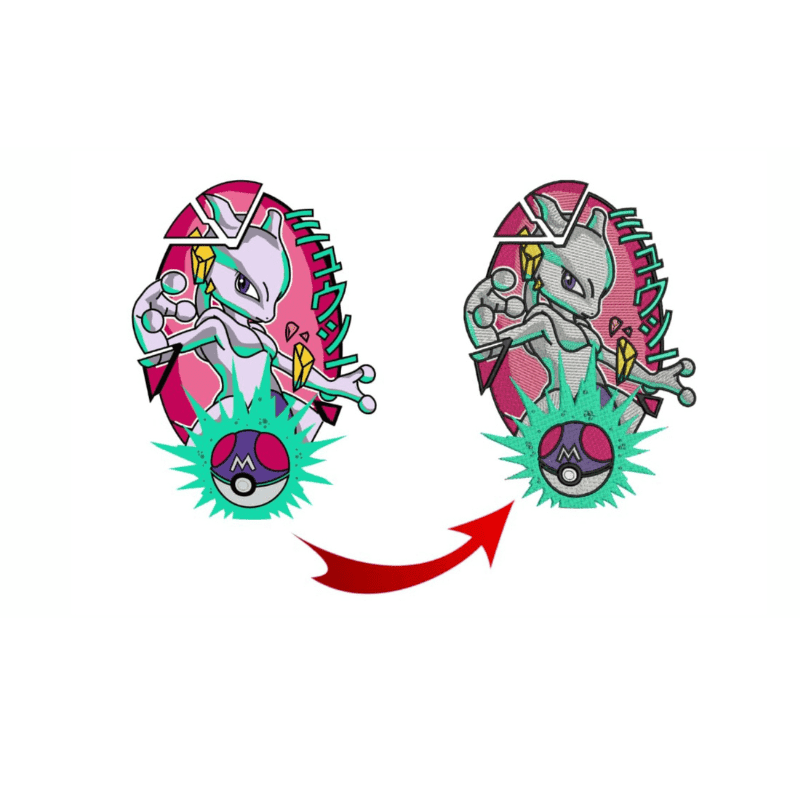Top Notch Digitizing for Embroidery: Specialist Workmanship
Top Notch Digitizing for Embroidery: Specialist Workmanship
Blog Article
Streamlining the Art of Needlework Digitizing: Step-by-Step Overview
As modern technology continues to advance, the digitization procedure has come to be much more accessible, enabling enthusiasts to bring their complex designs to life with ease. In this overview, we will unwind the intricacies of embroidery digitizing, damaging down each step systematically to streamline the procedure and empower both newbies and seasoned embroiderers alike.
Understanding Embroidery Digitizing Software
Embroidery digitizing software program functions as a crucial device for transforming intricate styles right into digital styles suitable with needlework devices, facilitating accurate sewing and customization. This specific software enables individuals to import numerous photo file styles, such as JPG or PNG, and transform them right into embroidery machine-readable styles like DST, EXP, or PES - Digitizing for Embroidery. By making use of attributes like stitch modifying, rug alternatives, and thread color choice, digitizing software program enables customers to regulate every element of the style process
In addition, progressed embroidery digitizing software application uses devices for developing intricate layouts, adjusting stitch thickness, and incorporating complex information. Individuals can additionally sneak peek the style prior to stitching it out, making sure precision and reducing errors. Furthermore, lots of software application programs give automated features that help streamline the digitizing process, conserving time and effort.
Comprehending the abilities of needlework digitizing software program is important for achieving high-quality outcomes in needlework jobs. By grasping this tool, needlework fanatics and experts can unleash their creativity and bring elaborate styles to life with precision and performance.

Choosing the Right Style Data
After acquainting on your own with the capabilities of embroidery digitizing software program, the next essential step in the procedure is selecting the appropriate design data for your project. Digitizing for Embroidery. When picking a layout apply for embroidery digitizing, it's vital to consider the intricacy of the style, the size of the end product, and the kind of textile you will be dealing with
For detailed styles with fine information, a high-resolution picture or vector data is suggested to make sure that the needlework equipment can properly replicate the style. Additionally, the dimension of the final product plays a significant duty in picking the ideal design documents. Larger designs might need higher resolution documents to preserve clarity and intensity.
Additionally, the kind of material you will certainly be embroidering on affects the selection of design data. Various fabrics may need adjustments in the style documents to ensure that the stitches are correctly lined up and the style shows up as intended. By very carefully picking the right style documents based upon these aspects, you can establish on your own up for a successful embroidery digitizing procedure.
Digitizing Devices and Techniques
Using specialized software and precision methods, digitizing devices are vital in changing elaborate styles right into embroidery-ready documents. Embroidery digitizing software program, such as Wilcom, Hatch, or Embrilliance, offers the needed platform to convert artwork right into stitch information. These programs provide functions like stitch modifying, padding alternatives, and text tools to ensure the style converts seamlessly onto material.
One of the vital methods in digitizing is developing a clear path for the needlework machine to follow. This entails digitizing each component of the layout with accuracy, determining stitch types, thickness, and instructions. By utilizing tools like digitizing tablets or software-specific plugins, embroiderers can achieve a high degree of precision in their digitized designs.
Furthermore, mastering the art of padding sewing is vital for creating high quality embroidery. Underlay sewing maintains the material and produces a foundation for the layout, making sure that the end product is both aesthetically appealing and lasting. By comprehending these digitizing devices and strategies, embroiderers can raise their craft and bring elaborate layouts to life with accuracy and efficiency.
Tailoring Stitch Kinds and Directions
The option of stitch kinds can considerably influence the general look and texture of the embroidered style. By strategically incorporating these stitch types, embroiderers can attain depth and dimension in their styles.
Furthermore, the instructions of stitches plays an essential role in enhancing the aesthetic allure of the last embroidery. Diverse stitch instructions can include appearance, highlight certain aspects, and develop aesthetic interest. As an example, changing the angle of stitches can replicate motion or all-natural patterns like hair or feathers. By try out various stitch angles and patterns, embroiderers can bring their layouts to life with remarkable detail and complexity. Grasping the art of personalizing stitch types and instructions empowers embroiderers to release their creative thinking and elevate the my sources quality of their work.
Screening and Refining Your Digitized Style
To make sure the accuracy and quality of your digitized design, extensive testing and refinement are important steps in the embroidery digitizing process. Once you have finished the digitization of your layout, it is critical to examine it prior to waging the actual embroidery. Checking enables you to determine any potential concerns such as thread breaks, sew density problems, or design distortions that might influence the final result.

After screening, it is necessary to fine-tune your digitized design based on the comments from the examination sew-out. This may entail tweaking sew settings, readjusting thickness, or making changes to the total style to achieve the preferred outcome. By iterating through testing and improvement, you can adjust your digitized style to excellence before progressing with the actual needlework procedure.
Conclusion
Finally, grasping the art of read the article needlework digitizing needs a detailed check my site understanding of the software program, choosing the best layout data, making use of digitizing tools and strategies, personalizing stitch kinds and directions, and screening and fine-tuning the digitized design. By adhering to these actions, embroiderers can simplify the digitizing procedure and create high-quality stitched designs with precision and performance.
Report this page